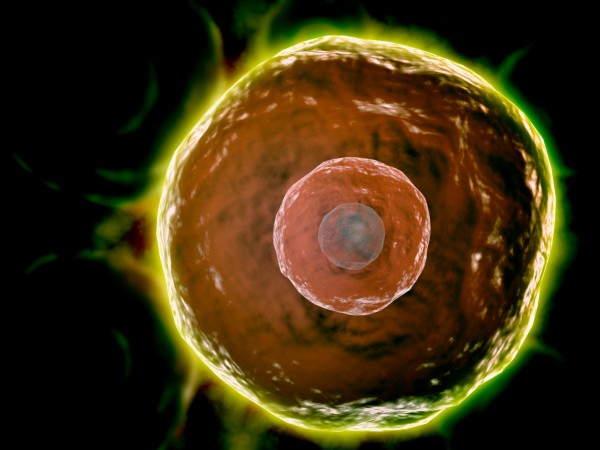Article successfully added.
CyFlow™ CD5 Biotin

| Application: | Flow cytometry |
| Clonality: | monoclonal |
| Target Species: | Human |
| Regulatory Status: | RUO |
| Source Species: | Mouse |
| Field of Interest: | Immunophenotyping |
| Isotype: | IgG2a |
| Format/Fluorochrome: | Biotin |
| Antigen: | CD5 |
| Alternative Name: | Leu-1, T1 |
| Clone: | L17F12 |
| Order number: | BH589141 |
For Research Use Only
Not for use in diagnostic or therapeutic procedures.
HLDA Workshop HLDA II Concentration Unit mg/mL Concentration 1 Quantity 0.1 mg... more
Product information "CyFlow™ CD5 Biotin"
| HLDA Workshop | HLDA II |
| Concentration Unit | mg/mL |
| Concentration | 1 |
| Quantity | 0.1 mg |
| Volume | 0.1 mL |
| Immunogen | Human Acute Lymphocytic Leukemia (ALL) T cells |
| Background Information | CD5 (T1) is a human cell surface T-lymphocyte single-chain transmembrane glycoprotein. CD5 is expressed on all mature T-lymphocytes, most of thymocytes, subset of B-lymphocytes and on many T-cell leukemias and lymphomas. It is a type I membrane glycoprotein whose extracellular region contains three scavenger receptor cysteine-rich (SRCR) domains. The CD5 is a signal transducing molecule whose cytoplasmic tail is devoid of any intrinsic catalytic activity. CD5 modulates signaling through the antigen-specific receptor complex (TCR and BCR). CD5 crosslinking induces extracellular Ca++ mobilization, tyrosine phosphorylation of intracellular proteins and DAG production. Preliminary evidence shows protein associations with ZAP-70, p56lck, p59fyn, PC-PLC, etc. CD5 may serve as a dual receptor, giving either stimulatory or inhibitory signals depending both on the cell type and development stage. In thymocytes and B1a cells seems to provide inhibitory signals, in peripheral mature T lymhocytes it acts as a costimulatory signal receptor. CD5 is the phenotypic marker of a B cell subpopulation involved in the production of autoreactive antibodies. Disease relevance: CD5 is a phenotypic marker for some B cell lymphoproliferative disorders (B-CLL, Hairy cell leukemia, etc.). The CD5+ popuation is expanded in some autoimmune disorders (Rheumatoid Arthritis, etc.). Herpes virus infections induce loss of CD5 expression in the expanded CD8+ human T cells. |
| Usage | The reagent is designed for indirect immunofluorescence analysis by Flow Cytometry. Working concentrations should be determined by the investigator. |
| Storage Buffer | The reagent is provided in phosphate buffered saline (PBS) solution, pH ≈7.4, containing 0.09% (w/v) sodium azide. |
| Storage | Avoid prolonged exposure to light. Store in the dark at 2-8°C. Do not freeze. |
| Stability | Do not use after expiration date stamped on vial label. |
Safety Data Sheet
Technical Data Sheet
Similar products
FITC
CyFlow™ CD1a FITC
| Antigen: | CD1a |
| Clone: | SK9 |
| Application: | Flow cytometry |
| Regulatory Status: | RUO |
| Target Species: | Human | Quantity: | 100 tests |
PE
CyFlow™ CD1a PE
| Antigen: | CD1a |
| Clone: | SK9 |
| Application: | Flow cytometry |
| Regulatory Status: | RUO |
| Target Species: | Human | Quantity: | 100 tests |
APC
CyFlow™ CD1a APC
| Antigen: | CD1a |
| Clone: | SK9 |
| Application: | Flow cytometry |
| Regulatory Status: | RUO |
| Target Species: | Human | Quantity: | 100 tests |
Purified
CyFlow™ CD1a Purified
| Antigen: | CD1a |
| Clone: | SK9 |
| Application: | Flow cytometry, Immunoprecipitation |
| Regulatory Status: | RUO |
| Target Species: | Human | Quantity: | 0.1 mg |
FITC
CyFlow™ CD1b FITC
| Antigen: | CD1b |
| Clone: | SN13 |
| Application: | Flow cytometry |
| Regulatory Status: | RUO |
| Target Species: | Human | Quantity: | 100 tests |
Purified
CyFlow™ CD1b Purified
| Antigen: | CD1b |
| Clone: | SN13 |
| Application: | Flow cytometry, Immunohistochemistry, Immunoprecipitation |
| Regulatory Status: | RUO |
| Target Species: | Human | Quantity: | 0.1 mg |
PE
CyFlow™ CD1c PE
| Antigen: | CD1c |
| Clone: | L161 |
| Application: | Flow cytometry |
| Regulatory Status: | RUO |
| Target Species: | Human | Quantity: | 100 tests |
Purified
CyFlow™ CD1c Purified
| Antigen: | CD1c |
| Clone: | L161 |
| Application: | Flow cytometry, Immunohistochemistry, Immunoprecipitation |
| Regulatory Status: | RUO |
| Target Species: | Human | Quantity: | 0.1 mg |
